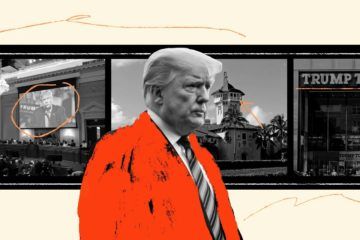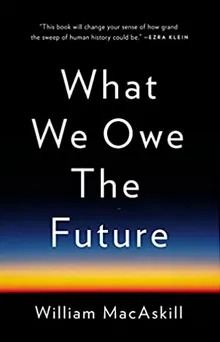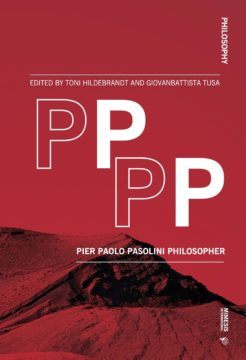Category: Recommended Reading
Making Oxygen on Mars
Steven Novella in Neurologica Blog:
 One of the major challenges of space travel is that there are no ready-made resources there. Mars, for example, has no food, shelter, oxygen, fuel, or power. It likely has water, but it’s not certain how much and how accessible. So for now any human mission to Mars will have to bring all recourses from Earth. Getting stuff to Mars is massively expensive, and resupply can take 6-9 months, during optimal launch windows. Keeping humans alive on Mars for any length of time is therefore a very tenuous and expensive endeavor.
One of the major challenges of space travel is that there are no ready-made resources there. Mars, for example, has no food, shelter, oxygen, fuel, or power. It likely has water, but it’s not certain how much and how accessible. So for now any human mission to Mars will have to bring all recourses from Earth. Getting stuff to Mars is massively expensive, and resupply can take 6-9 months, during optimal launch windows. Keeping humans alive on Mars for any length of time is therefore a very tenuous and expensive endeavor.
One obvious solution is what NASA calls “in-situ resource utilization,” – using stuff that is already there. The Perseverance rover on Mars contains an experiment called MOXIE (Mars Oxygen In-Situ Resource Utilization Experiment) that has taken the first step toward the goal of in-situ resource use. MOXIE was developed by engineers at MIT, it is a lunch-box sized experiment onboard the Perseverance that makes oxygen from the Martian atmosphere. It is essentially a proof-of-concept, and if it works may be the forerunner of far larger machines in the future.
More here.
The 4 major criminal probes into Donald Trump, explained
Ian Millhiser in Vox:
 If all the criminal investigations into former President Donald Trump end in conviction, then Trump will be a true renaissance man of crime.
If all the criminal investigations into former President Donald Trump end in conviction, then Trump will be a true renaissance man of crime.
The FBI searched Mar-a-Lago, Trump’s Florida residence because, as federal prosecutors said in a fiery court filing Tuesday, they believed not only did the former president possess “dozens” of boxes “likely to contain classified information” but also that “efforts were likely taken to obstruct the government’s investigation.” In that search, the FBI said it did remove over 100 classified documents, some of which reportedly contained information about nuclear weapons. That’s all part of just one investigation into possible violations of the Espionage Act, the improper handling of federal records, and obstruction of a federal investigation. Meanwhile, a second federal investigation is looking into the January 6 attack on the Capitol and broader efforts to overturn the 2020 election, an issue that obviously could implicate the man who spent most of the 2020 lame-duck period trying to erase his loss to President Joe Biden.
More here.
Thursday Poem
The Gust
In the mind
there comes a moment
when shadows fall back … like men
from a gust of something,
when the brain is light
as a fly on your wrist—
and in the jeweled eyes of that fly
you see your own six-legged self
white-shoed, dancing,
being on parade—
the gold tuba grown from your lips:
Um-pah-dah .. cha-cha .. huuh!
Meet me there.
.
by Tim Seibles
from Ploughshares at Emerson College
Spring, 1995
Wednesday, August 31, 2022
What We Owe The Future
Scott Alexander in Astral Codex Ten:
 If the point of publishing a book is to have a public relations campaign, Will MacAskill is the greatest English writer since Shakespeare. He and his book What We Owe The Future have recently been featured in the New Yorker, New York Times, Vox, NPR, BBC, The Atlantic, Wired, and Boston Review. He’s been interviewed by Sam Harris, Ezra Klein, Tim Ferriss, Dwarkesh Patel, and Tyler Cowen. Tweeted about by Elon Musk, Andrew Yang, and Matt Yglesias. The publicity spike is no mystery: the effective altruist movement is well-funded and well-organized, they decided to burn “long-termism” into the collective consciousness, and they sure succeeded.
If the point of publishing a book is to have a public relations campaign, Will MacAskill is the greatest English writer since Shakespeare. He and his book What We Owe The Future have recently been featured in the New Yorker, New York Times, Vox, NPR, BBC, The Atlantic, Wired, and Boston Review. He’s been interviewed by Sam Harris, Ezra Klein, Tim Ferriss, Dwarkesh Patel, and Tyler Cowen. Tweeted about by Elon Musk, Andrew Yang, and Matt Yglesias. The publicity spike is no mystery: the effective altruist movement is well-funded and well-organized, they decided to burn “long-termism” into the collective consciousness, and they sure succeeded.
But what is “long-termism”? I’m unusually well-placed to answer that, because a few days ago a copy of What We Owe The Future showed up on my doorstep.
More here.
What The Laws Of Biology Tell Us About The Destiny Of The Human Species
Leon Vlieger at The Inquisitive Biologist:
 When considering environmental issues, the usual rallying cry is that of “saving the planet”. Rarely do people acknowledge that, rather, it is us who need saving from ourselves. We have appropriated ever-larger parts of Earth for our use while trying to separate ourselves from it, ensconced in cities. But we cannot keep the forces of life at bay forever. In A Natural History of the Future, ecologist and evolutionary biologist Rob Dunn considers some of the rules and laws that underlie biology to ask what is in store for us as a species, and how we might survive without destroying the very fabric on which we depend.
When considering environmental issues, the usual rallying cry is that of “saving the planet”. Rarely do people acknowledge that, rather, it is us who need saving from ourselves. We have appropriated ever-larger parts of Earth for our use while trying to separate ourselves from it, ensconced in cities. But we cannot keep the forces of life at bay forever. In A Natural History of the Future, ecologist and evolutionary biologist Rob Dunn considers some of the rules and laws that underlie biology to ask what is in store for us as a species, and how we might survive without destroying the very fabric on which we depend.
More here.
Mikhail S. Gorbachev, Reformist Soviet Leader, Is Dead at 91
Marilyn Berger in the New York Times:
 Mikhail S. Gorbachev, whose rise to power in the Soviet Union set in motion a series of revolutionary changes that transformed the map of Europe and ended the Cold War that had threatened the world with nuclear annihilation, has died in Moscow. He was 91.
Mikhail S. Gorbachev, whose rise to power in the Soviet Union set in motion a series of revolutionary changes that transformed the map of Europe and ended the Cold War that had threatened the world with nuclear annihilation, has died in Moscow. He was 91.
His death was announced on Tuesday by Russia’s state news agencies, citing the city’s central clinical hospital. The reports said he had died after an unspecified “long and grave illness.”
Few leaders in the 20th century, indeed in any century, have had such a profound effect on their time. In little more than six tumultuous years, Mr. Gorbachev lifted the Iron Curtain, decisively altering the political climate of the world.
More here.
Sabine Hossenfelder on Renewable Energy Storage: No Wind, No Sun, Now What?
Pakistan has more than 7,000 glaciers. Climate change is melting them into floodwater
Benji Jones in Vox:
 Much of Pakistan is now underwater.
Much of Pakistan is now underwater.
A series of extreme floods has utterly devastated the South Asian nation, which is home to some 225 million people, washing away roads and buildings, destroying farms, and stranding hundreds of thousands. Over the weekend, which brought another bout of torrential rain, government officials said the death toll had soared past 1,000 and water had inundated as much as a third of the country. The main fuel for these catastrophic floods is rainfall. Summer is monsoon season, and this has been a particularly wet and wicked one, perhaps made worse by climate change. But there’s another culprit behind the recent devastation: melting glaciers and snow.
More here.
Wednesday Poem
One Year After My Dying Father and I Stop Speaking to Each Other Again
Someone on the internet is mourning
her dad—that old goat—with a goldmine
of anecdotes. Scraps of fondness I scrape off
her tweet—his beef wellington, her frogs. I want
my frown-scored mouth loaded with her clean vocabulary
of love. The way she holds her father’s hand, no pinch
of humiliation. Like the time I saw a teenager
sitting on her father’s lap. How I couldn’t
take my eyes off the alarming purity of it.
How my mouth dried at the sight like I had been drinking
the wrong water all this time. When I pull
the ocherous leaves from my thirsty pothos, it is
too easy. No satisfactory rip. Too ready
to let go. I covet the reels of the lucky ones going on
about their dead. Everyone I have lost
I have lost before the end.
by Eugenia Leigh
from Split This Rock
Cancer therapies that defy convention
From Nature:
 Can messenger RNA (mRNA) train the immune system to attack cancers that resist conventional treatments? To find out, researchers at Atlantic Health System are conducting a clinical trial, alongside other centres, to evaluate the efficacy of an experimental mRNA vaccine for patients with late-stage melanoma, the most lethal form of skin cancer. “This trial really resonates with patients,” says oncologist, Eric Whitman, medical director of Atlantic Health’s oncology service line, who is leading the study locally at Morristown Medical Center (MMC) in New Jersey. “They’ve heard how effective mRNA COVID-19 vaccines are; using a similar technology to help their body recognize and destroy melanoma makes sense to them.”
Can messenger RNA (mRNA) train the immune system to attack cancers that resist conventional treatments? To find out, researchers at Atlantic Health System are conducting a clinical trial, alongside other centres, to evaluate the efficacy of an experimental mRNA vaccine for patients with late-stage melanoma, the most lethal form of skin cancer. “This trial really resonates with patients,” says oncologist, Eric Whitman, medical director of Atlantic Health’s oncology service line, who is leading the study locally at Morristown Medical Center (MMC) in New Jersey. “They’ve heard how effective mRNA COVID-19 vaccines are; using a similar technology to help their body recognize and destroy melanoma makes sense to them.”
There is a dearth of effective treatments for melanoma, which kills about 8,000 people in the United States annually. Standard therapies fail to halt cancer progression in about 50% of patients, leaving them with no FDA-approved options.
More here.
Tuesday, August 30, 2022
Pier Paolo Pasolini Philosopher
Santiago Zabala in the Hong Kong Review of Books:
 There are some artists, scientists, and economists whose oeuvre is significant for philosophers even though we generally overlook them. This occurs because too often we deem worthy of philosophical interpretation only other philosophers and their investigations. But there are figures who have provided philosophers with new cultural, scientific, and political paradigms who are absent from our philosophical traditions. Although we could say they were philosophers without defining themselves as such, their works have often presented innovative concepts, meanings, and truths that give them the same ontological status as the work of other philosophers. For most continental thinkers—as analytic philosophers still believe our discipline is circumscribed exclusively to logical problems derived from mathematics and science—these figures are vital to understanding our past, present, and also future.
There are some artists, scientists, and economists whose oeuvre is significant for philosophers even though we generally overlook them. This occurs because too often we deem worthy of philosophical interpretation only other philosophers and their investigations. But there are figures who have provided philosophers with new cultural, scientific, and political paradigms who are absent from our philosophical traditions. Although we could say they were philosophers without defining themselves as such, their works have often presented innovative concepts, meanings, and truths that give them the same ontological status as the work of other philosophers. For most continental thinkers—as analytic philosophers still believe our discipline is circumscribed exclusively to logical problems derived from mathematics and science—these figures are vital to understanding our past, present, and also future.
Along with Freud, Einstein, and Marx, the Italian artist, director, filmmaker, poet, editor, painter, writer, and self-styled ethnographer Pier Paolo Pasolini (1922–1975) is certainly such a figure, which Toni Hildebrandt and Giovanbattista Tusa demonstrate in this marvelous collection of essays to celebrate the centenary of his birth.
More here.
One Man’s Dream of Fusing A.I. With Common Sense
Steve Lohr in the New York Times:
 David Ferrucci, who led the team that built IBM’s famed Watson computer, was elated when it beat the best-ever human “Jeopardy!” players in 2011, in a televised triumph for artificial intelligence.
David Ferrucci, who led the team that built IBM’s famed Watson computer, was elated when it beat the best-ever human “Jeopardy!” players in 2011, in a televised triumph for artificial intelligence.
But Dr. Ferrucci understood Watson’s limitations. The system could mine oceans of text, identify word patterns and predict likely answers at lightning speed. Yet the technology had no semblance of understanding, no human-style common sense, no path of reasoning to explain why it reached a decision.
Eleven years later, despite enormous advances, the most powerful A.I. systems still have those limitations.
Today, Dr. Ferrucci is the chief executive of Elemental Cognition, a start-up that seeks to address A.I.’s shortcomings. “To me, the Watson project was always a small part of a bigger story of where we want to go with A.I.,” he said.
More here.
These are energy bills many Britons simply can’t afford, some will pay with their lives
Aditya Chakrabortty in The Guardian:
 The sixth-richest country in the world faces a winter of humanitarian crisis. Unless the government acts now, millions of Britons will be unable to keep their homes warm. Some will die while, as the NHS warns, many more will fall seriously ill. Schools, hospitals and care homes across the country must choose between busting their budgets or freezing. Countless shops and businesses will close, never to open again. More than 70% of pubs are preparing for last orders, while any restaurant, cafe, chippy or kebab shop must now face existential threat, thanks to a quadrupling of their energy bills, surging food prices and a recession that will kill discretionary spending. As economic catastrophes go, this looks far bigger than the 2008 crash. It promises to reshape our everyday lives and social fabric.
The sixth-richest country in the world faces a winter of humanitarian crisis. Unless the government acts now, millions of Britons will be unable to keep their homes warm. Some will die while, as the NHS warns, many more will fall seriously ill. Schools, hospitals and care homes across the country must choose between busting their budgets or freezing. Countless shops and businesses will close, never to open again. More than 70% of pubs are preparing for last orders, while any restaurant, cafe, chippy or kebab shop must now face existential threat, thanks to a quadrupling of their energy bills, surging food prices and a recession that will kill discretionary spending. As economic catastrophes go, this looks far bigger than the 2008 crash. It promises to reshape our everyday lives and social fabric.
That is the meaning of today’s statement from the watchdog Ofgem. The new price cap of £3,549 it has set for household energy bills is almost triple that of last winter, and for many it is simply unaffordable. When it kicks in, at the start of October, 25% of Britons will not be able to pay their fuel bills.
More here.
“Traveler, There Is No Road” by Antonio Machado
Edith Stein and the power of empathy
Peter Salmon in Prospect Magazine:
 In October 1943, Henrich Himmler gave two speeches in Posen, Poland. The Posen speeches, as they have come to be known, represent the first time a member of Hitler’s Cabinet had publicly articulated the Nazi policy of the extermination of the Jews. Himmler, the head of the SS, acknowledged that the task was not without personal difficulty—to see 1,000 corpses and remain “decent” was hard, he said, but the experience made those who carried out the exterminations “tough.” What about the killing of women and children? According to Himmler, they needed to be exterminated because they might become—or give birth to—avengers of their fathers. In the end, he said, “the difficult decision had to be made to have this people disappear from the earth.” Empathy, while a natural human response, needed to be set aside.
In October 1943, Henrich Himmler gave two speeches in Posen, Poland. The Posen speeches, as they have come to be known, represent the first time a member of Hitler’s Cabinet had publicly articulated the Nazi policy of the extermination of the Jews. Himmler, the head of the SS, acknowledged that the task was not without personal difficulty—to see 1,000 corpses and remain “decent” was hard, he said, but the experience made those who carried out the exterminations “tough.” What about the killing of women and children? According to Himmler, they needed to be exterminated because they might become—or give birth to—avengers of their fathers. In the end, he said, “the difficult decision had to be made to have this people disappear from the earth.” Empathy, while a natural human response, needed to be set aside.
A year earlier, 51-year-old Edith Stein had been one of those disappeared by the Nazis on 9th August. Born Jewish, she was one of the remarkable women who had become part of the first followers of the new philosophy of phenomenology. She received her doctorate at the age of 25 and became, along with Martin Heidegger, one of Edmund Husserl’s teaching assistants and closest intellectual confidantes. Her doctoral thesis tackled one of phenomenology’s most pressing questions: it was called On the Problem of Empathy. For Stein, “the problem of empathy” was more than a theoretical subject: it guided her brief life in unexpected ways—killed for being Jewish, she was at the time of her death a Catholic nun. Too often overlooked as a thinker, she is now one of the six patron saints of Europe known as St Teresa Benedicta of the Cross.
More here.
The Animal Translators
Emily Anthes in The New York Times:
 The naked mole rat may not be much to look at, but it has much to say. The wrinkled, whiskered rodents, which live, like many ants do, in large, underground colonies, have an elaborate vocal repertoire. They whistle, trill and twitter; grunt, hiccup and hiss. And when two of the voluble rats meet in a dark tunnel, they exchange a standard salutation. “They’ll make a soft chirp, and then a repeating soft chirp,” said Alison Barker, a neuroscientist at the Max Planck Institute for Brain Research, in Germany. “They have a little conversation.” Hidden in this everyday exchange is a wealth of social information, Dr. Barker and her colleagues discovered when they used machine-learning algorithms to analyze 36,000 soft chirps recorded in seven mole rat colonies.
The naked mole rat may not be much to look at, but it has much to say. The wrinkled, whiskered rodents, which live, like many ants do, in large, underground colonies, have an elaborate vocal repertoire. They whistle, trill and twitter; grunt, hiccup and hiss. And when two of the voluble rats meet in a dark tunnel, they exchange a standard salutation. “They’ll make a soft chirp, and then a repeating soft chirp,” said Alison Barker, a neuroscientist at the Max Planck Institute for Brain Research, in Germany. “They have a little conversation.” Hidden in this everyday exchange is a wealth of social information, Dr. Barker and her colleagues discovered when they used machine-learning algorithms to analyze 36,000 soft chirps recorded in seven mole rat colonies.
Not only did each mole rat have its own vocal signature, but each colony had its own distinct dialect, which was passed down, culturally, over generations. During times of social instability — as in the weeks after a colony’s queen was violently deposed — these cohesive dialects fell apart. When a new queen began her reign, a new dialect appeared to take hold. “The greeting call, which I thought was going to be pretty basic, turned out to be incredibly complicated,” said Dr. Barker, who is now studying the many other sounds the rodents make. “Machine-learning kind of transformed my research.”
More here.
Tuesday Poem
Rearview Mirror
This little pool in the air is
not a spring but a sink into which
trees and highway, bank and fields are
sipped away in minuteness. All
split on the present then merge in
stretched perspective, radiant in
reverse, the wide world guttering
back to one lit point, as our way
weeps away to the horizon
in this eye where the past flies ahead.
by Robert Morgan
from The Language They Speak Is Things to Eat
University of North Caroline Press, 1994
Sunday, August 28, 2022
Käthe Kollwitz’s kitsch
Morgan Meis in The Easel:
 Betroffenheitskitsch. It is not an easy word to say. That’s because it is German and Germans love to make compound words. The core of the word is the adjective betroffen, which means ‘affected’, but also ‘concerned’, and even ‘shocked’ or ‘stricken’. Betroffenheit is the noun and can be translated as ‘shock’, ‘consternation’, ‘concern’. Finally, we add the word kitsch, which makes the whole thing, well, kitschy. Betroffenheitskitsch is shock or deep concern that has been taken to the level of kitsch.
Betroffenheitskitsch. It is not an easy word to say. That’s because it is German and Germans love to make compound words. The core of the word is the adjective betroffen, which means ‘affected’, but also ‘concerned’, and even ‘shocked’ or ‘stricken’. Betroffenheit is the noun and can be translated as ‘shock’, ‘consternation’, ‘concern’. Finally, we add the word kitsch, which makes the whole thing, well, kitschy. Betroffenheitskitsch is shock or deep concern that has been taken to the level of kitsch.
I bring this up in reference to the art of Käthe Kollwitz (1867 – 1945), the great German printmaker (she also painted and made sculptures) of the late 19th and early 20th centuries. There is, indeed, quite a lot of Betroffenheit in the work of Kollwitz. In fact, it is almost all Betroffenheit. Take, for instance, a work like The Widow II (1922). The image is woodcut on paper. It has all the strong lines and simple composition one expects from a woodcut. It is from the War series that Kollwitz produced several years after the end of WWI. Kollwitz’s own son, Peter, was killed in the war, and Kollwitz produced this series partly in response to her own grief.
More here.
What’s wrong with Google’s new robot project
Gary Marcus in his Substack newsletter:
 From a showmanship standpoint, Google’s new robot project PaLM-SayCan is incredibly cool. Humans talk, and a humanoid robot listens, and acts. In the best case, the robot can read between the lines, moving beyond the kind of boring direct speech (“bring me pretzels from the kitchen”) that most robots traffic in (at best) to indirect speech, in which a robot diagnoses your needs and caters to them without bothering you with the details. WIRED reports an example in which a user says “I’m hungry”, and the robot wheels over to a table and comes back with a snack, no futher detail required—closer to Rosie the Robot than any demo I have seen before.
From a showmanship standpoint, Google’s new robot project PaLM-SayCan is incredibly cool. Humans talk, and a humanoid robot listens, and acts. In the best case, the robot can read between the lines, moving beyond the kind of boring direct speech (“bring me pretzels from the kitchen”) that most robots traffic in (at best) to indirect speech, in which a robot diagnoses your needs and caters to them without bothering you with the details. WIRED reports an example in which a user says “I’m hungry”, and the robot wheels over to a table and comes back with a snack, no futher detail required—closer to Rosie the Robot than any demo I have seen before.
The project reflects a lot of hard work between two historically separate divisions of Alphabet (Everyday Robots and Google Brain); academic heavy hitters like Chelsea Finn and Sergey Levine, both of whom I have a lot of respect for, took part. In some ways it’s the obvious research project to do now—if you have Google-sized resources (like massive pretrainined language models and humanoid robots and lots of cloud compute)— but it’s still impressive that they got it to work as well as it did. (To what extent? More about that below).
But I think we should be worried. I am not surprised that this can (kinda sorta) be done, but I am not sure it should be done.
More here.
